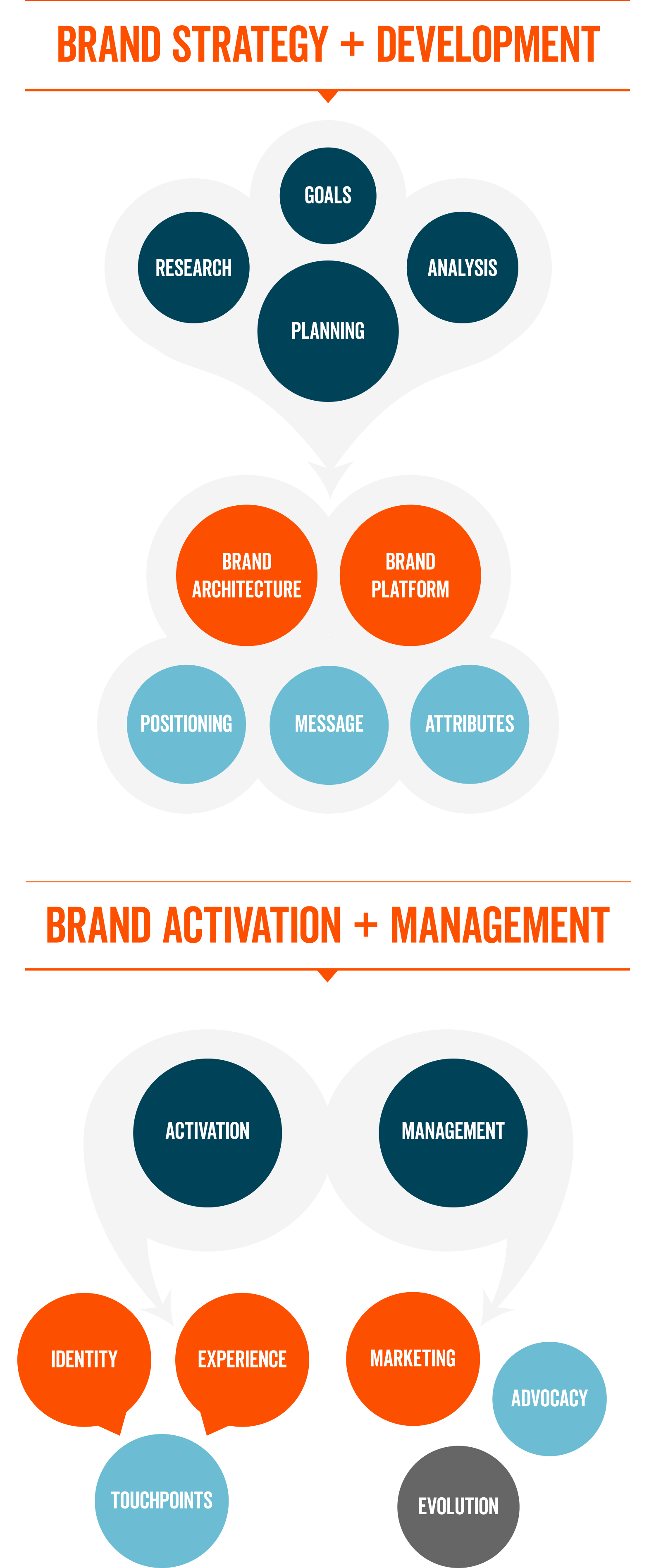Branding has become so complicated that even the savviest of marketers and brand managers are being tricked into thinking the absolute worst thing that one can think: tactics are strategy.
Today, more and more marketing teams are spending time figuring out how to increase engagement on LinkedIn rather than questioning why they are using LinkedIn in the first place.
Although the complexities associated with deploying marketing tactics can easily make you feel like you’re tackling the “big” problems that are guided by strategic thinking, the part that’s missing from the equation is the actual upfront strategy.
In other words, companies are jumping into the nuts and bolts of brand management instead of developing their brand strategy.
To understand this better, take a look at this diagram:

Everything under “brand development” must be carefully considered and clearly defined in order to answer the question: What’s your brand strategy? This is why research, analysis and planning are critical.
During the brand development phase, your goals are set, and a brand position, message and attributes capable of achieving those goals are conceived. Only then, the final brand platform is developed. Everything brand-related that’s decided and created after goal setting occurs is collectively known as brand strategy.
Brand activation (execution) and management – including brand identity, brand experience and all forms of marketing communications – although critical to marketing, should be based on brand strategy, but they are not strategy.
Even the creation of your marketing plan is actually part of brand management, to be tackled only after brand strategy is set.
Also Read: Brand Strategy Playbook
Often the key question in marketing isn’t, “Are we getting good results?” but rather, “Could we get better results?” Well, better results related to what?
Without an underlying brand strategy in place, you could end up spending much-needed resources on improving metrics that ultimately get you nowhere. You are setting yourself up to take a shotgun approach year after year, rather than maintaining a laser-sharp focus on those aspects of your marketing that are capable of achieving high-value impact.
The first smart thing to do is to stop investing in any new tactical initiatives until you develop a sound brand strategy followed by an on-point marketing strategy and the plan for executing and managing it.
Don’t stop everything you’re doing, but do put everything on simmer while you are taking a deep dive into your brand and the context in which you do business. Any branding firm worth its salt will tell you not to touch your current brand until you understand your market, industry, audience, competitive landscape and more.
Until there’s a crystal clear answer to “What’s our brand strategy?” no company can execute a marketing plan with certainty and focus.
Those who try are playing a guessing game (and often don’t even know it). But those who do wake up to the fact that their brand strategy is MIA have the opportunity to recalibrate and come back to the market with a plan based on insight rather than luck.
Download our free Brand Toolbox, a guide we’ve developed to assist you with the branding process – from conducting your brand audit to smoothly navigating the process.
Visit our Rebranding Resource Center for Busy Marketers and Business Leaders for the most up-to-date trends, tips and resources.
Are you an in-house marketer? Read The Rebranding Challenge: What’s an In-House Marketer to Do?
An agile, disruptive world calls for an agile brand – learn how to think about brands differently, design brands differently and create a new framework for managing brands differently in our Brand Management Manifesto.
Download a free PDF of this article here.